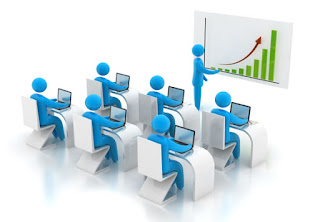The use of translation software for cultural references
Introduction
At the moment, we are living in the electronic age and ICTs have become an important part of our daily lives. We use them everywhere to help us realize a great variety of tasks.
We also have the opportunity to use them in our professional life. In the case of my outcome speciality, business and cultural services, software can be used to help us to realize a lot of tasks, for example: to improve delivery service, to keep a registry of our company’s financial situation or to make publicity of our products with help of social media.
Problem Description
Cultural translation plays a very important role in
tourism.
According to Kelly (1997) in the majority of cases, the tourist’s first impression of a city depends on the translation’s quality of a tourist brochure.
Lack of interest related to cultural translation is one of the main issues in this area. As Bugnot (2005) argues:
- There is little information available about cultural translation.
- As a consequence, the majority of tourism’s materials are poorly translated.
- These materials are used as an example of what to avoid for translation students.
This is and incongruity…
Kelly (1997) poses that cultural translation should attract more attention from researchers, considering that tourism is a big market and translation is an essential activity inside this area.
As Martínez (2011) explains there are some features of cultural texts as:
- Culturemes
- Ambiguous phrases
- Names of institutions
- Place names
…that difficult a good translation even when a person performs it!
Professional online translators may be more appropriate for touristic translations
- The quality of their service is superior compared with a regular one.
- However, it must be clear that the idea of using an online translator is not to replace the “human translators” but help them to make their work a little easier.
It must be clear that the idea of using an online translator is not to replace the “human translators”...
... But help them to make their work a little easier.
... But help them to make their work a little easier.
According to Muñoz (2012), a tourist brochure translation must keep the same functions of the original to obtain the acceptance of the goal culture.
Contextualization
- I am realizing my professional practices in the Tourism Department in Fresnillo, Zacatecas.
- I noticed that people who work in this department do not count with the adequate academic preparation to perform an acceptable translation of cultural information.
- In my opinion, a partial solution of this problem is to find a good translation software to help them to execute an understandable translation for foreigners.
- This department counts with computers and Internet connection, so this possible solution is feasible.
Purpose and Objective
Purpose
- Find out if a professional online translator would be useful in the cultural translation area.
- Indubitably, this tool will not replace the work of the translator!
- However, the use of it should ease their work.
Objective
- Facilitate cultural translation with help of translation online software
Application Description
Systran
He’s opinion is that Systran could be helpful because it allows the translator to save some time when performing a cultural translation.
As happens with all translators online, some parts of the translation resulted imprecise but the translator can easily correct them.
- Company which offers software specialized in translation solutions for business.
- It can translate to 52 languages.
- It is easy to use, I just have to enter my text in the page and press “instant translation”.
- In my opinion, the quality of its work is superior to regular online translators.
Results
Advantages:
- The resulting translation is more accurate than if it had been done with regular online translators.
- It reduces the time that the translators spend working by offering them a basic translation to begin with.
- It translate large texts in a short period of time.
Disadvantages:
- Dates are poorly translated.
- Some place names are translated too literally.
- The professional service that Systran provides is not for free.
Systran online translator works well considering that the service is free and that its function is just to help human translators not replacing them.
References
- Bugnot, M. A. (2005). Texto turístico y traducción especializada.
- Kelly, D. A. (1998). The translation of texts from the tourist sector: textual conventions, cultural distance and other constraints. TRANS: revista de traductología, (2), 33-42.
- Martínez, J. A. A. La marca cultural como problema de traducción: interculturalidad diatópica y diacrónica.
- Muñoz, I. D. (2012). Caracterización de la traducción turística: problemas, dificultades. Revista de Lingüística y Lenguas Aplicadas, 7(1), 103-114.







































